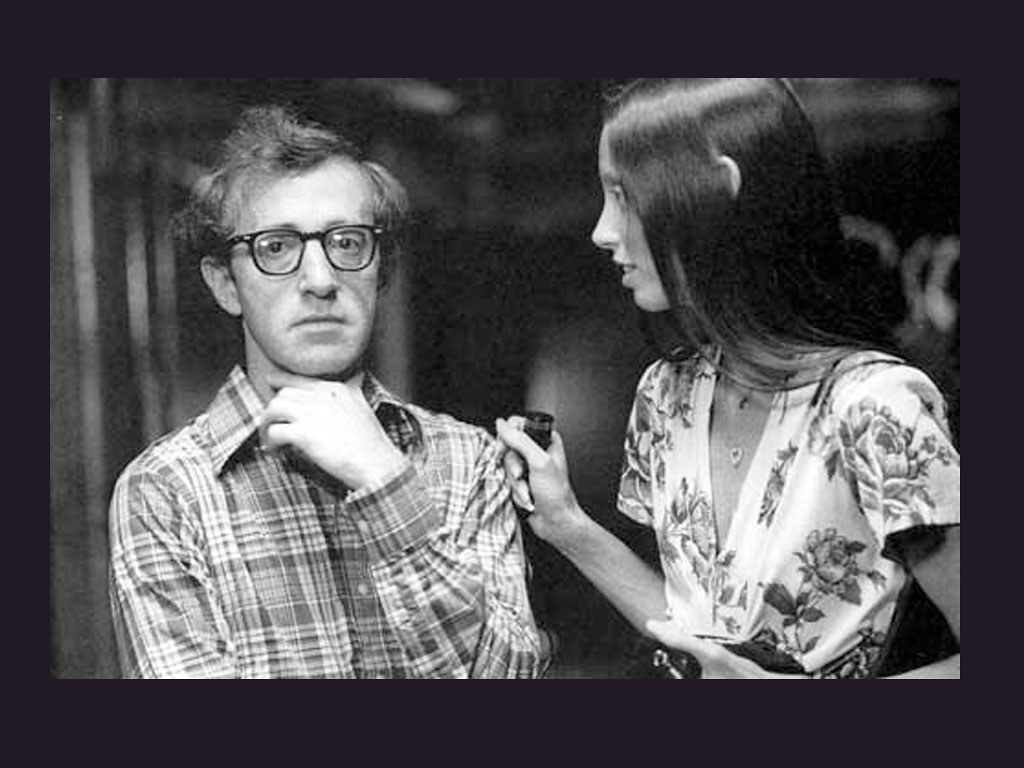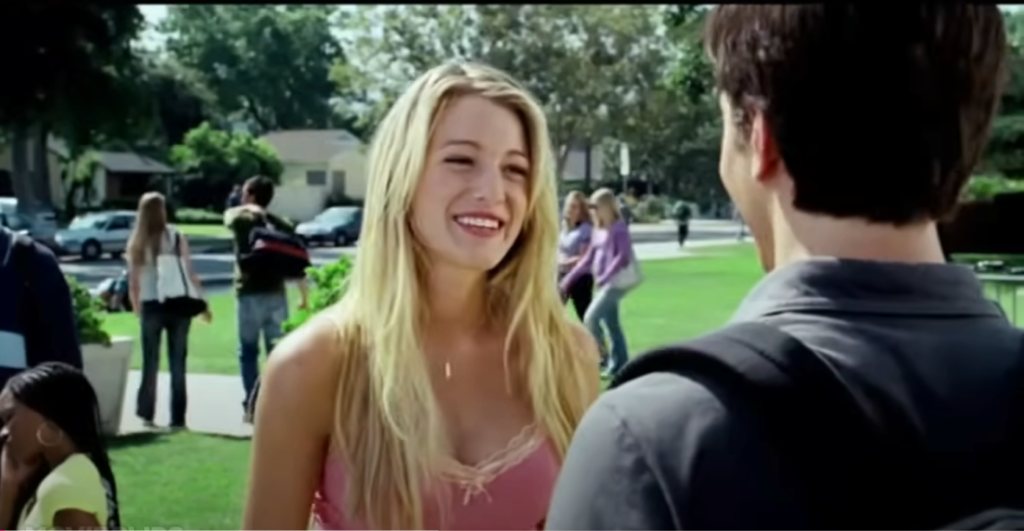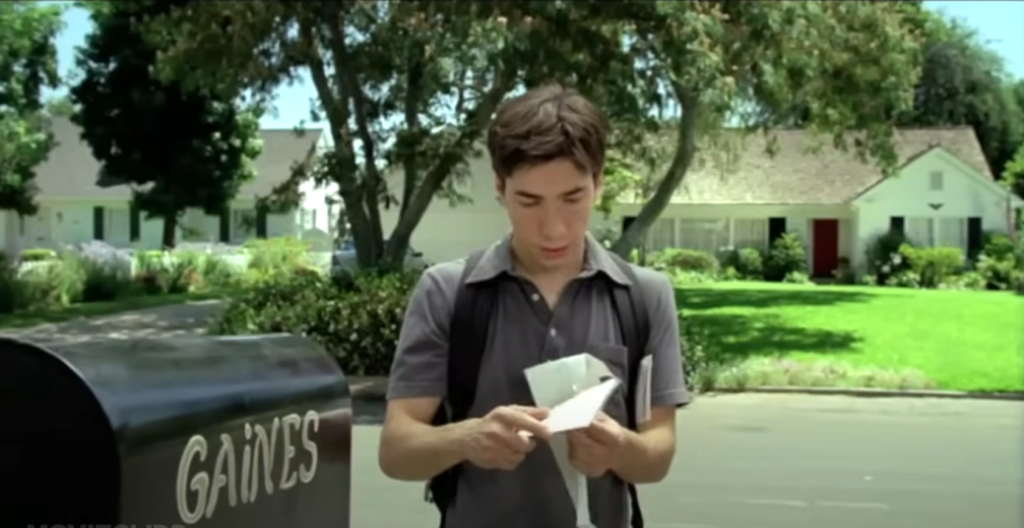Introduction
Hey there, fellow movie buffs! Let’s talk about a gem that has left an indelible mark on cinema—Annie Hall. Now, if you’re as much of a film geek as I am, you’ll know that this 1977 classic isn’t just your run-of-the-mill romantic comedy. Directed by Woody Allen, Annie Hall broke all sorts of new ground, blending humor, reality, and a good dose of introspection in a way that was pretty revolutionary at the time.
One of the coolest tricks up Allen’s sleeve in this film was breaking the fourth wall. You know, that moment when a character stops and speaks directly to us, the audience, as if we’re part of the story. It’s like they’re letting us in on a secret or sharing their innermost thoughts, and suddenly, the barrier between the movie and the real world just melts away.
Traditionally, breaking the fourth wall was more of a theater thing, but Annie Hall brought it to the big screen in a way that was fresh and exciting. This technique didn’t just spice up the narrative—it gave us a deeper connection to the characters, especially Alvy Singer, our neurotic but lovable protagonist. And what’s even more fascinating is how this approach has influenced so many films that came after. So, let’s dive into how Annie Hall used this technique to change the game in storytelling.
Understanding the Fourth Wall
Alright, let’s break this down. The fourth wall is that invisible barrier between the characters in a movie or play and us, the audience. Imagine you’re watching a play—the actors are doing their thing on stage, and it’s almost like there’s a glass wall between them and the seats. That’s the fourth wall. The idea is that the audience gets to peek into this fictional world without the characters acknowledging that we’re there.
But here’s where it gets interesting. When a character breaks the fourth wall, they’re essentially shattering that glass, turning to us and saying, “Hey, I know you’re watching.” It’s such a fun way to disrupt the usual flow of storytelling because it pulls us right into the action. We’re no longer just observers; we become part of the conversation.
Historically, this technique has been around for a while, especially in theater. Think of Shakespeare’s plays where characters like Hamlet would deliver soliloquies directly to the audience. In film, you’ve got classics like It’s a Wonderful Life where characters occasionally acknowledge the camera. But Annie Hall took this to a whole new level, using it not just as a gimmick but as a way to deepen the narrative and give us insight into the characters’ minds. And trust me, it’s these moments that really stick with you long after the credits roll.
The Use of the Fourth Wall in Annie Hall
Now, let’s talk about how Annie Hall absolutely nailed this technique. One of the most memorable examples is when Alvy Singer, played by Woody Allen himself, turns to us and starts talking directly to the camera. There’s this fantastic scene where he’s in line at a movie theater, and the guy behind him is going on and on about filmmaker Marshall McLuhan. Alvy, clearly annoyed, turns to us and starts ranting about how pretentious this guy is. But it doesn’t stop there—Alvy actually pulls McLuhan into the scene to shut the guy down! It’s such a brilliant and unexpected moment that makes you feel like you’re in on the joke.
Another great example is the split-screen therapy session. Here, we see Alvy and Annie (played by the wonderful Diane Keaton) talking to their respective therapists. The split-screen lets us see both conversations at once, but it’s when Alvy starts addressing the audience directly that we get a deeper understanding of his character. He’s not just talking to his therapist—he’s letting us into his mind, sharing his insecurities and frustrations in a way that feels personal and intimate.
And then there’s the use of subtitles during a conversation between Alvy and Annie. On the surface, they’re talking about photography, but the subtitles reveal their true thoughts, which are far more vulnerable and revealing. It’s a clever way to show us the disconnect between what people say and what they’re really thinking, and it brings us closer to the characters because we’re privy to their inner worlds.
These moments are more than just cinematic tricks—they’re windows into the souls of the characters. By breaking the fourth wall, Annie Hall creates a connection that goes beyond traditional storytelling. We’re not just watching the story unfold; we’re part of it, sharing in the characters’ thoughts, fears, and triumphs. And that’s what makes this film so timeless.
The Impact on Character Development and Narrative Structure
Breaking the fourth wall in Annie Hall does more than just entertain—it’s a key element in shaping Alvy Singer as a relatable, self-aware protagonist. By addressing the audience directly, Alvy invites us into his inner world, sharing his thoughts, doubts, and neuroses in a way that feels authentic and unfiltered. This candidness makes Alvy feel less like a fictional character and more like someone we might know—or even like ourselves. His self-awareness, paired with his direct communication with the audience, allows us to see him not just as a character in a film, but as a person navigating the complexities of life and love.
This technique also allows Annie Hall to play with a more complex narrative structure, blending elements of reality, memory, and fantasy. The film doesn’t follow a linear storyline; instead, it moves fluidly through time, jumping between Alvy’s memories, his fantasies, and the present moment. By breaking the fourth wall, the film gives us insight into Alvy’s thought process as he reflects on his past and tries to make sense of his relationship with Annie. This approach blurs the lines between what is real and what is imagined, creating a narrative that feels layered and rich with meaning.
What’s particularly fascinating about Annie Hall is how it uses this technique to merge the audience’s perspective with Alvy’s subjective experience. When Alvy speaks directly to us, we’re not just passive viewers—we’re participants in his story. This creates a unique bond between the character and the audience, making us more invested in his journey and more empathetic to his struggles. It’s a storytelling approach that feels deeply personal and engaging, and it’s one of the reasons why Annie Hall has such a lasting impact.
Influence on Future Films and Storytelling
The innovative use of breaking the fourth wall in Annie Hall didn’t just end with the film—it sparked a ripple effect in the world of cinema and television, influencing countless works that followed. One of the most iconic examples is Ferris Bueller’s Day Off (1986), where Ferris, much like Alvy, frequently turns to the camera to share his thoughts, plans, and philosophies with the audience. This direct engagement makes Ferris feel like a friend, someone who’s letting us in on his mischievous adventures.
Fast forward to more recent times, and you see the influence of Annie Hall in films like Deadpool (2016), where the titular character constantly breaks the fourth wall to hilarious and often meta effect. Deadpool’s irreverent commentary and acknowledgment of the audience play a huge role in defining the film’s unique tone and style, making it stand out in the superhero genre. Similarly, in television, shows like House of Cards use this technique to draw viewers deeper into the political scheming of Frank Underwood, making us complicit in his manipulations and more connected to his dark, strategic mind.
The success of Annie Hall encouraged filmmakers to push the boundaries of traditional storytelling, opening up new possibilities for narrative experimentation. By breaking the fourth wall, directors and writers found a way to create a more intimate connection between characters and viewers, making stories feel more personal and immersive. This technique has since become a powerful tool in the storyteller’s arsenal, used to great effect in various genres and mediums.
Critical Reception and Legacy
When Annie Hall was released in 1977, it was met with widespread acclaim, particularly for its innovative storytelling techniques. Critics and audiences alike were struck by how the film broke away from the conventional romantic comedy format, offering something that felt fresh, intelligent, and deeply resonant. The use of breaking the fourth wall was seen as a bold move, one that added a new dimension to the narrative and allowed for a more profound connection with the characters.
The film went on to win four Academy Awards, including Best Picture, Best Director for Woody Allen, and Best Actress for Diane Keaton. Its success solidified its place in cinematic history as a groundbreaking work that redefined what a romantic comedy could be. Annie Hall became a touchstone for future filmmakers, inspiring them to experiment with narrative structures and character development in ways that had previously been unexplored.
Even today, the legacy of Annie Hall continues to influence filmmakers and storytellers. The film’s clever use of breaking the fourth wall has become a reference point for how to engage audiences on a deeper level, making it a lasting example of how innovative storytelling can leave an enduring mark on cinema.
Conclusion
In Annie Hall, breaking the fourth wall wasn’t just a clever gimmick—it was a revolutionary storytelling tool that reshaped how characters and narratives could interact with audiences. By allowing Alvy Singer to speak directly to us, the film created a unique connection that made the story feel more personal, more intimate, and ultimately, more impactful.
This technique added layers to the film’s narrative, blending reality, memory, and fantasy in a way that felt fresh and innovative. It also paved the way for future filmmakers to explore new storytelling possibilities, influencing a wide range of films and television shows that have since adopted and adapted the technique.
As we continue to see the influence of Annie Hall in modern cinema, it’s clear that this film’s approach to breaking the fourth wall has left a lasting legacy. It remains a shining example of how a simple narrative device, when used effectively, can revolutionize storytelling and create a lasting connection with audiences.



